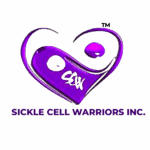I got asked this question by one of my more inquisitive readers and I had to go searching for an answer! This is directly quoted from an article on Dr NDTV.com written by Dr. Kumar.
Nicosan is a phytochemical agent i.e. a chemical or nutrient derived from a plant source that is not required for normal functioning of the body but that nonetheless has a beneficial effect on health or an active role in the amelioration of disease. Thus, phytochemicals differ from traditional nutrients in that they are not a necessity for normal metabolism, and their absence will not result in a deficiency disease. It is made from four botanical species indigenous to Nigeria and consists of extract of Sorghum bicolor leaf, Pterocarpus osum stem, Piper guineensis seed and Eugenia caryophyllum flower.
The drug was granted orphan drug status by the United States Food and Drug Administration (2004) and the European Medicine Evaluation Agency (2005) and is currently classified as an orphan drug i.e. a drug used to treat rare diseases whose development may not offer the pharmaceutical industry a return on the research investment. The drug was developed at the Nigerian National Institute for Pharmaceutical Research and Development and has undergone Phase I, Phase IIa and IIb clinical trials and currently Phase III clinical trials are going on in Nigeria. The data shows that treatment with niprisan significantly reduced the frequency of sickle cell disease crises associated with severe pain during a six-month period (P < .01) and nearly 73% of patients achieved complete remission. Niprisan did not appear to cause acute hepatic or renal toxicity and no serious adverse events were reported. FDA approval is still pending though the drug is approved in Nigeria. Although its precise mechanism of action is not yet confirmed, it has been shown to inhibit red cell sickling in vitro by increasing solubility of sickle haemoglobin. Analysis of its effect on the Hb S oxygen affinity indicated that the drug slightly shifted the oxygen-dissociation curve of Hb S toward the left without any apparent change in the Hill coefficient. These results suggest that its anti-sickling properties may involve direct interaction with haemoglobin molecules.
Despite early trials showing a benefit, the Cochrane Collaborations review on phytochemicals for SCD noted that while Niprisan appeared to be safe and effective in reducing crises associated with severe pain over a six-month follow-up period of this trial, further trials are required to assess its role in the management of people with sickle cell disease.
It is as yet premature to say what the impact of this drug will be, however, users of the medicine claim to be symptom free for months. A diet rich in nutritional thiocyanate / dioscovite has anecdotally been shown to be effective in preventing red blood cell sickling in people with sickle cell disease. No clinical trials have been conducted and there are no published randomized controlled trials. Though not a cure, it is touted as controlling the symptoms associated with the disease.
Published on November 14, 2008 by Dr. Shirish Kumar, Consultant Haematologist, Sir Ganga Ram Hospital, New Delhi, India

